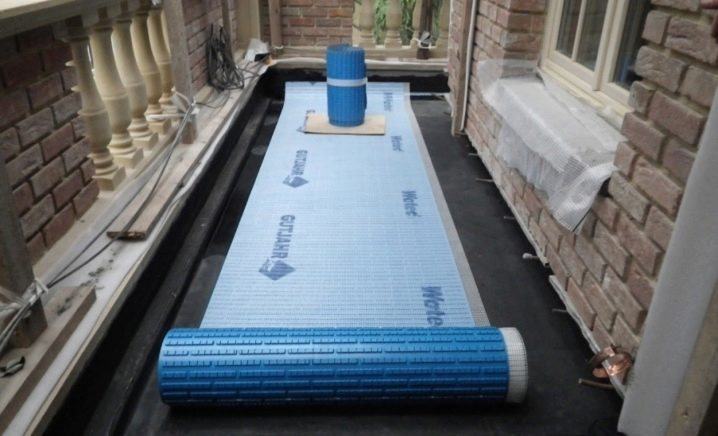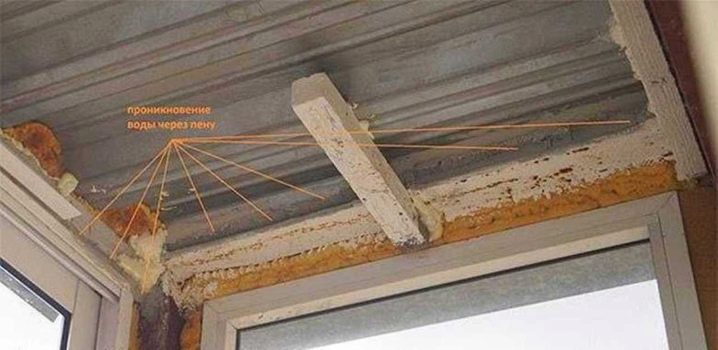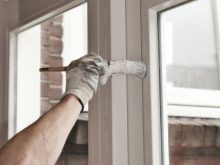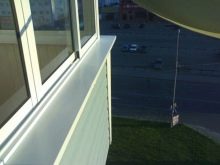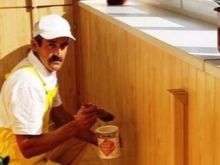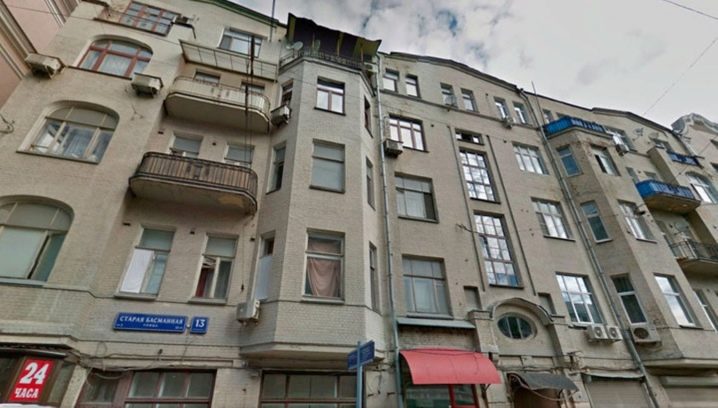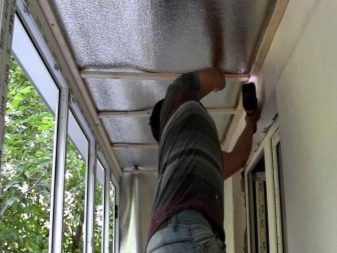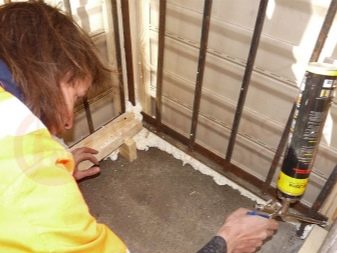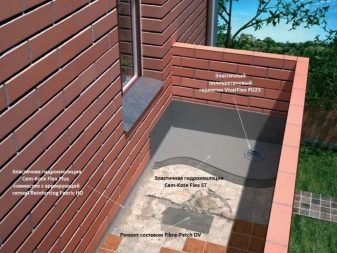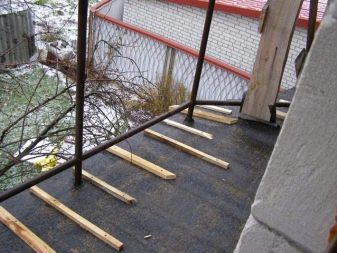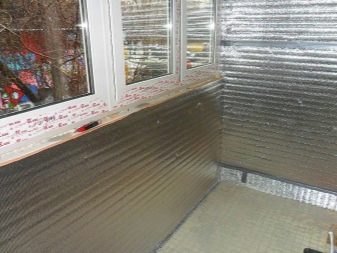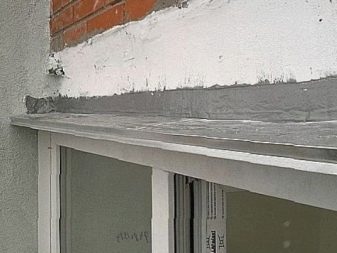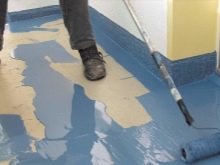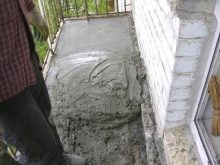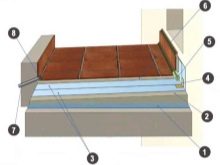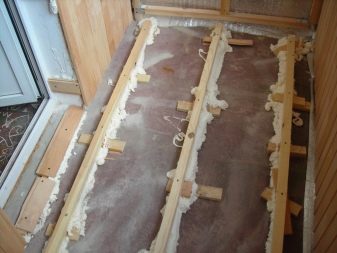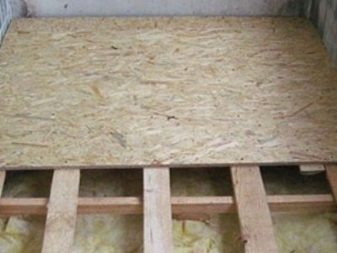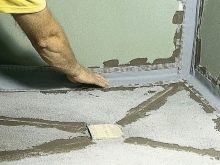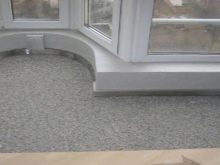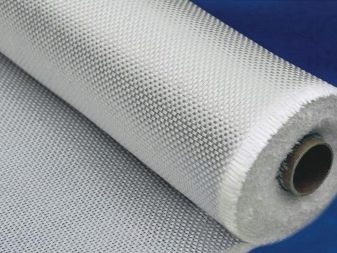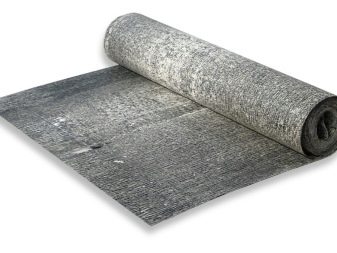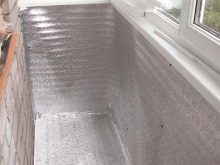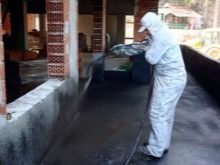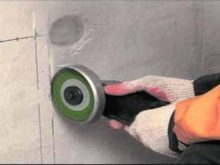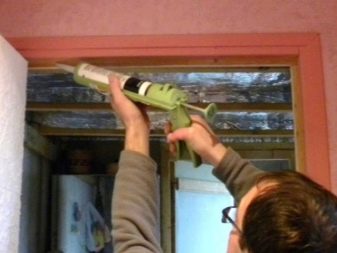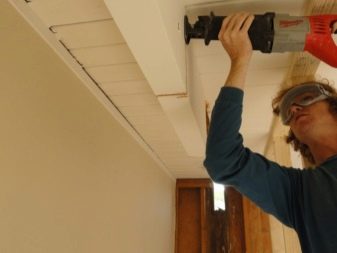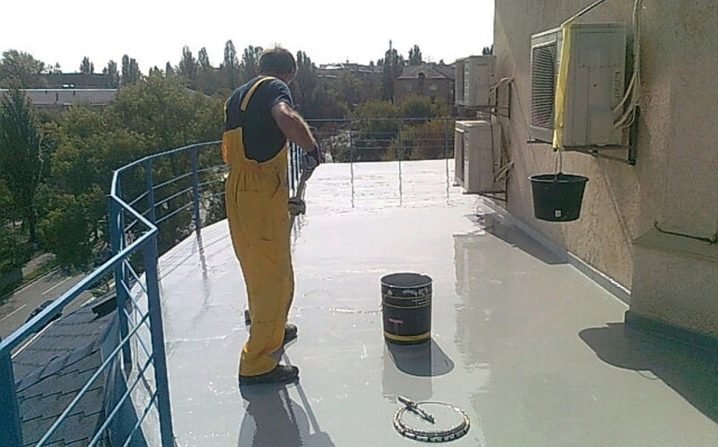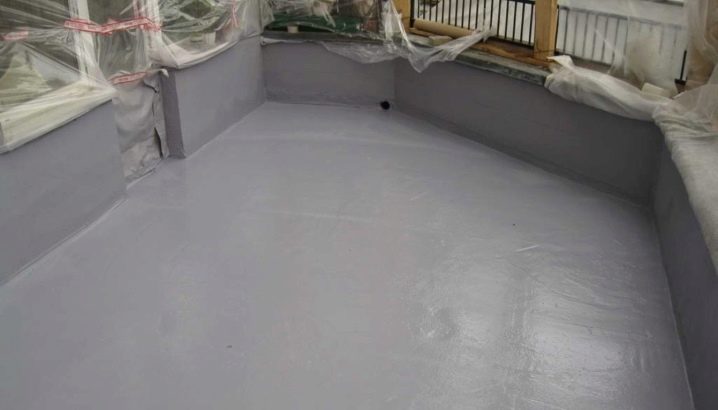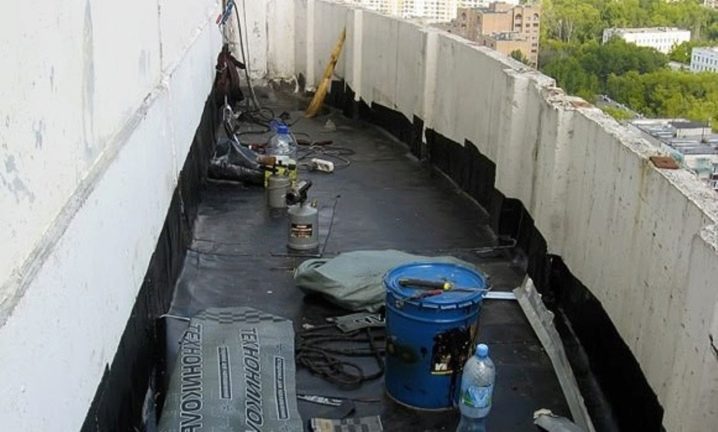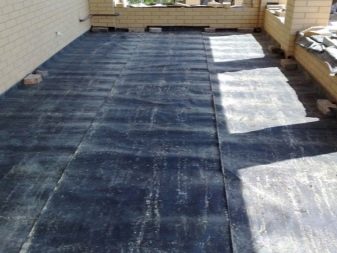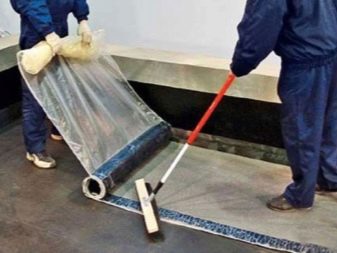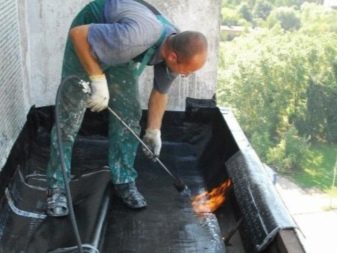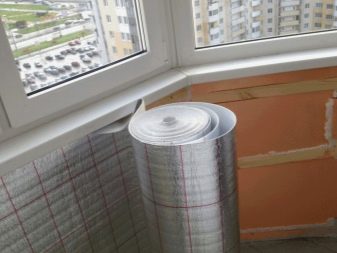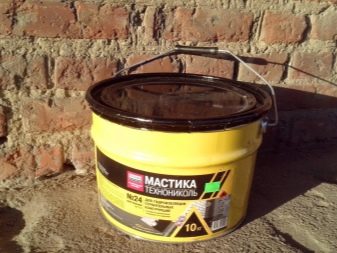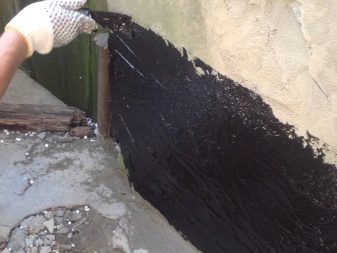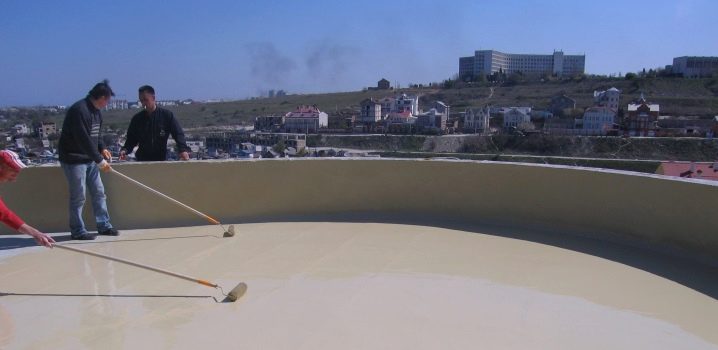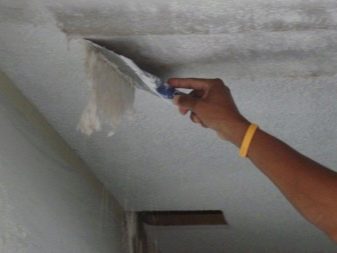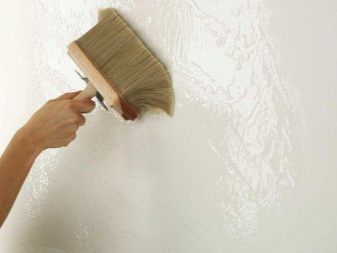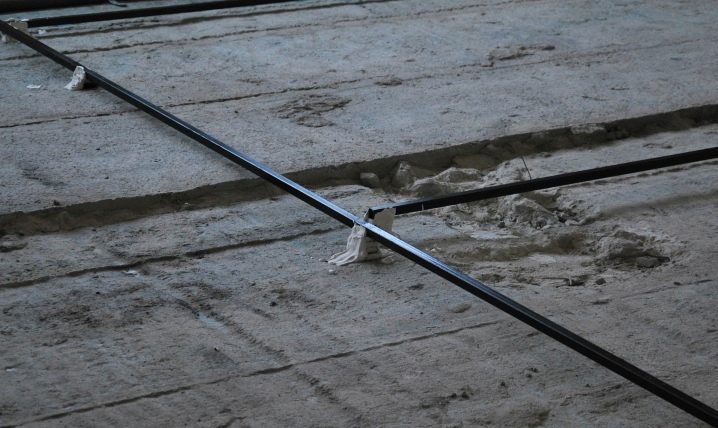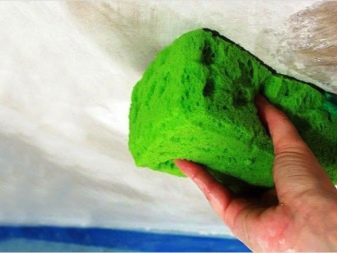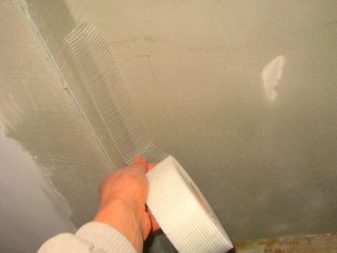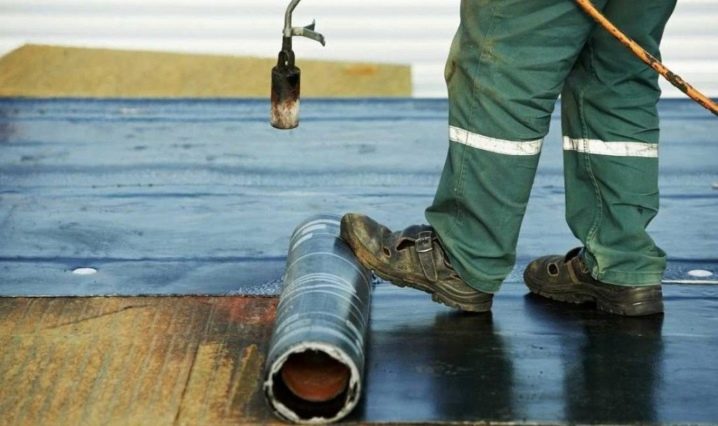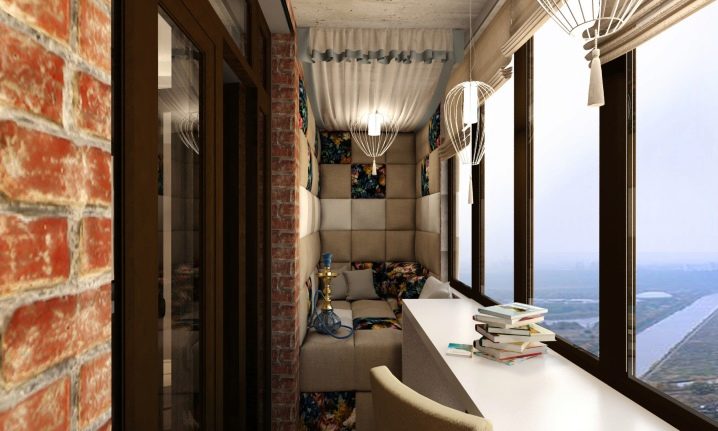Nuances of balcony waterproofing
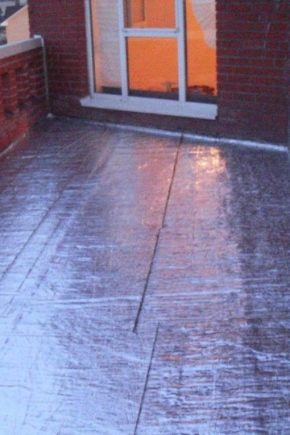
If earlier the balcony was most often used as a closet, then now everyone tries to redo it and turn it into a cozy addition to their apartment. However, glazing a balcony and installing a roof on it is not enough. It is also necessary to make it waterproofing.
Purpose
Waterproofing a loggia or an open balcony in a private house or apartment is needed to protect building materials from water, as well as to insulate a balcony. Water flows through cracks or seams of structures and causes the destruction of the balcony slab.
Therefore, these works are quite important in the arrangement of the balcony. After all, carrying out waterproofing implies not only sealing the seams, but also other things.
- Protection of the frame itself, as well as some wood products with water repellents. They are covered with special varnishes and enamels, as well as varnish.
- Arrangement of an external low tide, which does not allow water to flow under the frame.
- Treatment of all wooden surfaces using antiseptics. This is to protect against mold.
If waterproofing is done professionally or even independently, but following the advice of experts, then it will protect not only the ceiling, but the floor and walls. In addition, if you make the insulation of the balcony, you can increase the power structure, and make living more comfortable.
Fortunately, in almost all cases, the base of the balcony or loggia is made of concrete slab. If the floor is located in the middle of the building, then another plate is added to the owners instead of the ceiling, which serves as the ceiling.
Features of the device
High-quality waterproofing will help to cope with many troubles that await a person in the future. This is the appearance of mold, and corrosion of metal elements and other finishing materials.And also will not allow to spoil the floor covering of the balcony.
That the waterproofing was made correctly, it is necessary to consider all features of a design of a balcony.
First of all, you need to pay attention to the following points:
- processing the entire area of the balcony;
- balcony cover;
- availability of additional protection.
For different types of balconies, you can use different types of finishes. For open-type balconies in a frame house or a brick building, it will be enough to waterproof one plate and the floor. But if the balcony is in a wooden house, then you will need to make waterproofing both from the inside and outside. This is relevant both for the last floor and for the one in the middle.
If the loggia is insulated, then in addition it is necessary to make a vapor barrier, using for this purpose penofol. It is also necessary to waterproof the door. Making the insulation of the balcony, it is possible to warm the floor, walls, ceiling, and the inner surface of the visor.
Floor
Make insulation and waterproofing of the floor in many ways.
First, pay attention to the first method.
- In this case, the coating paste is applied to the balcony slab.It is required to protect styling. In the process, the floor is first leveling with a concrete screed. If the balcony is open, be sure to make a slope to drain the water.
- Then stacked wooden logs, as well as insulation. Alternatively, foam can be used. The seams must be sealed. The OSB of the plate is fixed on top, which will serve as the basis for the application of sealing. OSB slabs need to be treated with a primer, you can bitumen. This is done to ensure adhesion is better.
- Then it is necessary to dissolve the polyurethane paste containing 2 components, and to lubricate all the corners with it.
- The tape consisting of geotextiles is pressed into it. It reinforces the connection at the corners. Next, the first layer of insulation is applied to the entire OSB plane of the slabs, after which it must be reinforced with geotextiles. The second layer grows gradually, its thickness reaches two centimeters.
- When the base is completely dry, a layer of polymer binder is applied. It is sprinkled with synthetic chips on top. After which they are sealed with varnish.
There is a second method of waterproofing. In this case, everything is done using rolled materials. This may be fiberglass and roofing material. Here waterproofing can be done with penetrating mastic. When it crystallizes, it fills all cracks and forms a very durable coating.
Walls
To make a waterproofing of walls and partitions of a balcony or loggia, you can use foil polystyrene foam. It must be firmly glued to the wall. But also suitable and regular foam, which must be covered with vapor-insulating captivity.
The joints that formed between the sheets, you need to seal. Next, put two layers of mastic to protect was reliable. Before starting work on waterproofing be sure to cut the grinder U - shaped grooves.
They must be made in the seams between the panels, as well as additionally sealed. This is done to ensure that moisture does not enter the room through microcracks. At the end of a decorative cover.
Ceiling
When the balcony is glazed, during precipitation traces of water may form, which will be collected below. This happens if neither waterproofing nor sealing of the balcony has been made.To fix this problem, you just need to do waterproofing work. The first step is to seal the joints using polyurethane sealant.
But before you remove the seams, you need to cut them with a grinder. Then the seams are cleaned of dust, then moistened with water.
If there are any stains on the surface of the ceiling, it means that there are cracks in those places through which water enters the balcony. You need to do the same with them.
The ceiling waterproofing itself begins with surface cleaning. Then the ceiling is treated with antiseptic, so that there is no mold. Then, sealing of the seams, as described above, is done.
To isolate the ceiling, it is necessary to apply a polyurethane paste, which has very good adhesion. The advantages of this material include the fact that it is applied to the ceiling easily. Mastic must be distributed in two layers so that the second layer is perpendicular to the first. And also after the first layer it is necessary to make the reinforcement mesh. To mastic well hardened, must pass three days. At this time, you need to suspend repair work on the balcony.
And also warming the roof, you can glue a sheet of foiled polystyrene foam to the ceiling. He will also be responsible for the vapor barrier. The seams between them must also be sealed.
Materials
Waterproofing work requires a deliberate approach. Therefore, choosing materials, you must very carefully analyze all the information about them. After all, many professionals say that waterproofing can not be bad or good. It is either there or not. The materials used for waterproofing can be divided into several types. These are okleechnye or, in other words, rolled, obmazochny materials, and also painting.
Paint shops
Paint waterproofing can be of two types:
- cold, which consists of epoxy-rubber resin;
- hot, it consists of bitumen-polymer varnishes.
It is often used to process balcony terraces. It has properties to protect reinforced concrete from corrosion.
However, it is worth remembering that the terms of its service are not too long. Therefore, after five or six years will need to restore the paint coating.And you also need to take into account the fact that in severe frost it becomes very fragile.
For applying waterproofing, it is necessary to pre-treat the surface. For this it will be enough to clean it and degrease. Next you need to apply a primer of mastic in two layers. In conclusion, you need to paint the floor with a bitumen layer of two millimeters.
Okleechnye
Rolled waterproofing can be of two types.
- Weldable, when laying which burner is used.
- Self adhesive insulation, which is a more modern option. You can stick it yourself, while removing only the protective film. No additional tools and materials are needed. This option is reliable and durable. In order for everything to go right, you need to prepare the surface well and glue it very carefully.
The most common roll material is roofing felt. It is fitted with a burner.
It is worth noting penofol and penofolgu, which are polyethylene, moreover, porous and covered with lavsan film. If the waterproofing of the balcony is made with the use of foam foil, then it will last for a long time, since it does not accumulate moisture, and it can reflect ultraviolet rays. It is also a heat insulator.
For example, if you make a balcony with a four millimeter penofolga, then this will be equal in efficiency and protection from laying to a brick and a half. And this means that no additional insulation will be needed for the balcony.
Coating
Today, coating materials are becoming very popular. This is a fairly large group of different means of insulation, which include sealants, cement, bitumen or polymer mastic. Coatings are very unpretentious in work. It is enough to mix them and apply with a spatula to the surface. Sand may be added to some formulations.
Bitumen mastics are very famous and popular today. They consist of oxidized bitumen, in which some solvents are added. This and baby, and latex, they increase the elasticity of waterproofing.
This isolation option is resistant to external factors. However, in order for the coating to be of high quality, it is necessary to make a tie behind it.
In addition to bitumen, there is also cement-polymer mastic. They are made by adding mineral fillers. Part of the cement provides good adhesion to the base.Polymer fillers penetrate the pores of the base and seal them. The result is a layer with a thickness of up to three millimeters.
Stages of work
In carrying out waterproofing work it is very important not only to choose the right materials, but also to carry out the work in the correct sequence and in accordance with all the rules.
Step by step instructions are very simple.
- First of all, in order for the waterproofing to be of high quality, it is necessary to clean all surfaces of the balcony from paint, dirt, dust and other substances that may impair adhesion. All these works can be done with a regular brush or even a vacuum cleaner.
- After the preparatory work, all surfaces are treated with a primer compound, in other words, a primer. It is applied to the surface with a brush, and then very carefully rubbed into absolutely all the cracks. Then use a smaller brush to finish all joints. It is very important not to make a mistake in choosing a primer.
Preparing the base, you should follow the recommendations of experts.
- Base irregularities should not be more than two millimeters.
- The surface should be flat without sharp protrusions.
- Laying leveling screeds need to make strips that will go along the guide beacons. Their width should be two or three meters.
- Before applying cement materials on porous surfaces, it is imperative to moisten them with water using a sponge. This will prevent quick drying.
- The joints of vertical and horizontal surfaces must be glued using sealing tape. When the structure is diverged, it is stretched, and when it returns to its original place, it is compressed.
The moisture of the prepared base must be at least four percent. If you do not adhere to this rule, then excess moisture, which remains inside, after some time can reduce the waterproofing. When making cement-sand screeds, it is necessary to make an exposure of up to 28 days. This is done so that there are no cracks.
The next step is the preparation of waterproofing mixtures. Some of them are available in ready-made form, and some must be prepared by yourself. Solutions can not retain their properties for a long time, so they need to be done in small portions.
Next comes the stage of applying waterproofing. If it will be rolled materials, then you need to do the following:
- prepare a waterproofing pastel and cut pieces to the required size;
- heat it with a burner;
- cover the joints between the wall and the balcony with roll waterproofing.
For work with obmazochny materials it is necessary to observe a certain sequence.
- The temperature of the air and the surface must be at least fifteen degrees above zero. Humidity should not exceed sixty percent. This temperature should be two days before the start of work and another twelve days after their completion.
- Waterproofing should be applied evenly on the surface of the balcony. This can be done with a spatula or roller.
- Drying time may vary. It depends on the layer thickness, humidity of the room, as well as temperature conditions.
- To continue the work, it is necessary to check whether the moisture content of the mixture is within acceptable values that correspond to these materials.
To provide additional waterproofing, it is necessary to install roof windows in the balcony, which are well insulated and insulated.
If the balcony is open, it will be enough to waterproof the floor only.If it is a closed balcony or loggia, then the insulation must be made complete.
For balconies that are above the bay window or other elements of architecture, you need to do waterproofing, which has increased protection from natural influences. To do this, the balcony must be very carefully processed both outside and inside. At the end of the work, it is necessary to see that there are no cracks or crevices left that may soon lead to water leakage. After all, it will harm not only the balcony, but also the bay window under it.
If you study all the subtleties of waterproofing, as well as properly do it yourself, following the advice and recommendations of experts, you can turn the balcony into a comfortable living space. It may even be a rest room, which will allow you to relax after working outdoors. A properly made waterproofing will provide not only comfortable, but also safe rest.
You will learn more about all the nuances of waterproofing a balcony by watching the following video.
